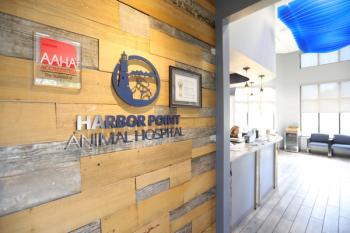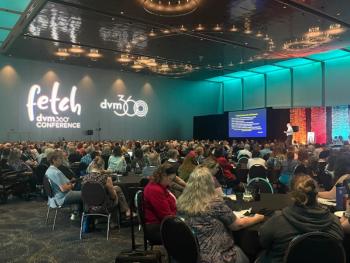
AVMA symposium attempts to tackle diversity
MINNEAPOLIS — Critics of veterinary leadership want a more diverse veterinary population, and they are willing to take their case to the American Veterinary Medical Association (AVMA) to promulgate it.
MINNEAPOLIS — Critics of veterinary leadership want a more diverse veterinary population, and they are willing to take their case to the American Veterinary Medical Association (AVMA) to promulgate it.
Talk includes opening college accreditation process to incorporating diversity and going to AVMA headquarters demanding a resolution.
Convention News
"There are not enough qualified minority students applying to colleges of veterinary medicine," says Michael Blackwell, DVM, MPH, dean, University of Tennessee College of Veterinary Medicine. "That is at no fault of the AVMA, but as the governing body of the profession, it should be their concern as to why that is the case."
Enhancing the profession by making veterinary medicine a more provocative option to minority students is the intention of the Association of American Veterinary Medical Colleges (AAVMC) and the panel of speakers at the AVMA diversity symposium in Minneapolis.
Those working on improving diversity shortcomings in the profession are becoming less patient on association action and are vocalizing their concerns and pushing for solutions.
"The minority group is vastly under represented in our veterinary schools, says Ronnie Elmore, DVM, MS, DACT, Kansas State University associate dean for academic affairs and admissions. "Recruiting a diverse veterinary student body is even more important now. The profession is facing a human resource crisis and needs to increase class sizes, increase number of schools and encourage growth, according to the AAVMC.
Table 1. How diverse are veterinary classes?
The national veterinary applicant pool has remained flat the last three or four years, while other health professions have increased significantly.
"If demand for veterinarians is increasing, why are applicants staying flat. There is an untapped group of people within the population. It's not only the right thing to do — to have more diverse profession, but also smart to fill need for vets," Elmore adds.
Why diversity matters
A diverse population within the profession has been a topic of discussion for years, contends Patricia Lowrie, MS, director of the Women's Resource Center at Michigan State University and assistant to the dean in the college of veterinary medicine.
"This isn't a new issue, and it's time to take action on making the changes. What is it going to take for the Council on Education (COE) to make this a standard requirement for accreditation? A system needs to be in place to have a diverse student body."
While not all panel members were as optimistic with the COE making a radical motion to alter its format, there were suggestions of other options.
10 steps to increase number and diversity in veterinary classes:
"We might need to ride a bus up to Schaumburg (Ill.) for a talk, but COE isn't going to happen," Blackwell says. "Additional conversations need to take place."
The mediator of the day-long event, Dr. Evan Morse, chairman of the Ohio Veterinary Medical Association Diversity Task Force, says he hopes the symposium will serve as a beacon, guiding the profession toward frank and open discussion on diversity.
"Some of the ideas about the perception of minorities in the profession need to be thoroughly explored," Morse says. "The racial/ethnic groups who are considered minorities today will not always hold that position. Right now, although there are no demographic studies, I am aware of five African American veterinarians in Ohio out of 3,500 in practice. That is shocking: only five in the entire state."
Diverse discussion
Lowrie says the attendance of the symposium could have been more impressive, citing the lack of attendance by AVMA leadership and presidents from state associations.
"The people that need to hear this aren't present. Why aren't the delegates here; they adjourned at noon," she says. "It should be mandatory for leaders to attend these talks."
Audience response at the symposium repeatedly reiterated the need for better communication within the AVMA.
AVMA Diversity Committee
"Anticipation of change isn't going to make it happen," says Jerome Williams, DVM, Birmingham, Ala. Minorities need to make themselves more present if they want change to happen. Too many times events for the profession take place, and the minority population is scarce. One step for those wanting change in the profession, is to make themselves more visible within the profession."
"AVMA needs to tell members who is on the diversity task force so we can contact those people to make our concerns known," says Lila Miller, DVM, veterinary advisor and senior director of life sciences for the American Society for the Prevention of Cruelty to Animals. "There have been discussions on forming a black/person of color veterinary medical association to have a ranking in the profession."
While the efforts of AVMA presidents Dr. Bonnie Beaver and Dr. Henry Childers were noted, panel members identified the Executive Board as the powerhouse of the association that needs to be on board with the idea of accomplishing diversity.
"It is a good move the AVMA has formed a task force, but it's 2005, not 1960; we should be way beyond this. The executive board operates outside of democracy — We are preaching to the choir here. The people who need to be here are not in the audience," Blackwell says.
Social dynamics
Elmore says white families are 10 percent more likely to own pets while blacks are 57 percent less likely, Asians are 28 percent less likely and Hispanic families are 20 percent less likely to own any pet than the average American.
"Whites own 94 percent of all cats and 91 percent of all dogs and reptiles in the country," Elmore says. "In a survey of the class of 2006 veterinary students, 99 percent own or have owned a dog or cat in their lifetime, making a good argument for a correlation between pet ownership and applying to veterinary school."
Other theories on why a small number of qualified minorities apply to veterinary schools include lack of role models within the profession, no encouragement to enter the field and less attractive test scores, sources say.
"Targeting academia seems to be the most logical source for accomplishing diversity," Blackwell says. "Some colleges need more help than others. Tennessee isn't perfect."
"I think next year's symposium will be a little edgier. People were keeping their politeness this year. Talking about diversity makes people uncomfortable," says Lisa Greenhill, MPA, associate executive director for diversity for AAVMC.
The alteration of priority
"Two or three years ago, I approached AVMA leadership about diversity, and I felt like I was ignored," Elmore says. "Historically, it seems the AVMA doesn't want to look into this issue, but I was encouraged at this meeting because a few people did come to the symposium. Next year I think the delegates will be attending — the schedule will be arranged so the House of Delegates isn't overlapping," Elmore says.
The issue has the AVMA's attention, according to Sharon Granskog, AVMA assistant director of media relations.
"I'm sure the idea of incorporating diversity in accreditation will be discussed at the next COE meeting October 23 and 24," Granskog says. "I would imagine the council will discuss the issue and make a recommendation."
The AVMA 2006 budget allots $14,700 for travel for the seven members of the diversity task force for two nights and three planned meetings.
Eleven essentials are requirements for veterinary accreditation — One on student body diversity is not mentioned as a requirement, Elmore adds. Cultural awareness should be addressed.
"Change needs to be written into the essentials for accreditation, some people on the panel were saying — different from quotas. We just want a plan for diversity within the curriculum."
Who needs to pay attention
"There needs to be an aggregate of all of the state association, colleges, leadership at AVMA," Lowrie says. "Federal veterinarians are the most diverse sector of the profession; they need to say why it works and is important, lab animal veterinarians. A compelling case needs to be made regarding the importance for the students."
Lowrie says she is not surprised by who came to the symposium.
"Practitioners haven't even thought about being interested in diversity; it's the system that has thought about diversity." They don't see the symposium as necessary, Lowrie adds.
The people who have been concerned about diversity for some time have work to do no one has pinpointed the cause of why minorities are less eager to join the profession, but there are theories, Lowrie says.
Most panel members maintain an optimistic view that the AVMA is trying to make up for lost time and is investing significant resources in making the profession more diverse while others ask how the task force was selected.
The AVMA announced another diversity symposium for next year's meeting in Honolulu that will potentially span two days.
Newsletter
From exam room tips to practice management insights, get trusted veterinary news delivered straight to your inbox—subscribe to dvm360.




